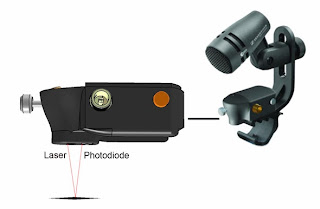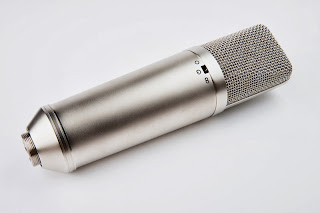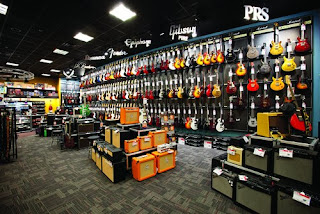The great drummer
Ricky Lawson has suffered a severe stroke that has him clinging to life, and as a tribute I thought I'd post part of an interview that I did with him for
The Drum Recording Handbook (written with the excellent engineer
Dennis Moody).
It just might be easier to say who Ricky Lawson hasn’t played with rather than list all of his credits. Having performed with the likes of Quincy Jones, the Brothers Johnson, Phil Collins, Steely Dan, Eric Clapton, Babyface, Lionel Ritchie, Anita Baker (The Rapture), Whitney Houston (I Will Always Love You), not to mention as musical director for Michael Jackson, Ricky was also the original drummer for The Yellowjackets, where he won best R&B Instrumental Grammy in 1986 (And You Know That). There’s obviously a reason why these musical superstars used Ricky on a first-call basis, and that’s not only because he's so massively talented and guaranteed to provide a giant grove, but he's so exceedingly humble and helpful to others as well.
"Can you describe your kit? Do you take a different kit on the road than you use in the studio?
I’ve been with the Pearl company for about 3 ½ years now and use a Pearl Studio Master kit with maple shells. I use a different kit on the road from the studio because the studio is such a detailed environment and everything has to be precise since it’s always under a microscope. On the road things don’t need to be so precise so I do take a different kit. With the economy being what it is these days, we can’t always afford to take equipment with us on the road so we get backline companies to supply us with equipment. I just order what I have at home and they supply it for me.
What size are your drums?
I generally use five toms in the studio - 8x8”, 10x10”, 12x12”, 14x 14”, and a 16” over on my high-hat side. The bass drum is usually 22x16”. I’ll use a host of different snare drums depending upon what you’re going for. For a hip hop or R&B kind of vibe I’ll use a snare that’s 14x6” or 6 ½”. Something that’s reasonably deep.
Sometimes for something that’s a little on the pop side, I may use a 14x4 ½” piccolo snare or maybe even a 13” snare which has become very popular because it has the weight to it but it still has the snap because of the smaller diameter. I’ve used snare drums as small as 10” in diameter and maybe 5 ½” deep for jazz projects and hip hop projects. Usually I enjoy the wood snares better because they have a tendency to sound a little warmer than the metal snare drums, but it’s all a combination of drum heads and microphones and processing and the engineer to make things sound good. You can have a $10,000 drum kit and he can make things sound like cracker boxes, and you can have cracker boxes and he can make it sound like a $10,000 kit. There are a lot of little factors that make a difference and what we try to do is cut down as many as possible or turn them to our advantage.
I have my own kit tuned the way I like it, with the heads that I like and with the kind of microphones and the kind of engineer that I know can capture it, because a lot of engineers cannot capture what a real acoustic drum set sounds like.
What do you like to use for mics on your kit?
I always use Shure mics because they’re consistent and always work. When I toured with Steely Dan those were the mics that we used. We used the KSM’s, the VP-88, and the Beta 52. If a guy pulls these mics out I know it’s usually going to be great. 95% of the time they use an SM-57 on the snare drum. I’ve seen some teeny, tiny mics where the guy got a killer sound and I’ve had a session where the guy used $30,000 worth of mics on the drums and it sounded like $500 worth. I’m telling you that the sound is in the engineering and the studio environment. It’s not really what I like to see on the drums, it’s who I see engineering because you can get a cat that doesn’t know what he’s doing and it can be a nightmare. Back in the day, they might have only used three or four mics tops, but if a guy knew what he was doing, he got a killer drum sound. It’s the engineering factor that plays such a big part in the situation.
How many snare drums do you bring to a session?
Usually anywhere from five to six. At my studio I have about eight that’ll I’ll regularly choose from. You’d be surprised. Different drums bring out different spirit in the music. I used some snare drums that were as big as a coffee can and it sounded huge just by backing the mic away and capturing more of the sound with the overhead mics. If you play a fatter drum you have to get in a little bit closer so it can capture that meat, that body of the drum. I went through four snares on the last session that I did, not because they sounded bad but because the client wanted to blend my snare along with the electronic snare drum they had going on. We changed them until we found the right one because my job is to give them what they’re looking for and in this case, that’s what they wanted.
Sometimes people think that a snare drum is going to sound a particular way because of the size of it, but it all depends on the tuning of the drum. I always tell them, “Hey, let me know what you need and I’ll get you there,” because that’s our job, to get them exactly what they need.
Do you tailor the kit that you bring to the session to the type of music?
Yes, sir. If we’re doing pop stuff I’ll make sure that I have some big toms and if we’re doing jazz stuff the toms will be a little bit smaller so the sound isn’t as bombastic. A lot of times I choose a kit that’s pretty general that I can use it on just about anything. With the 8”, 10”, and 12” with 14” and 16” floor toms, I can do pretty much anything that’s going down. I can play Jazz, I can play funk, I can play Pop, I can play Gospel with that kit. Whatever is necessary.
At my studio I use four toms but I have the ability to add two more to that configuration, but I bring five toms to an outside session.
Any advice for someone just starting to record?
Yeah, come over to the Ricky Lawson studio and take a quick lesson (laughs). I enjoy teaching and I wish I had someone do this with me when I was a young kid, so if someone wants to come over to my place to watch a session, great. Come on over, because a lot of it is not only the playing but the fellowship and how you talk to people and get along with people and comprehend what someone is saying.
As far as advice, the first thing is to play good time. Secondly, you have to make it feel good. If you don’t, you’re going to get beat up from having to play it over and over again. I usually try to get stuff done in one or two takes. Hopefully I can get it done in one (laughs), but if not, two or three is not bad. But job one is to play good time.
Do you have any tricks to making things feel good?
No, man, I just listen to the music and I try to play it as if I wrote it. When you think like that you have a tendency to play it a lot differently than if you just got it cold. A lot of time we haven’t heard the music or seen the artist before. That’s the biggest drag. It’s hard to get the music cold, figure it out, and then play it as if you’ve been playing it for years. Then you have to make it happen in the least amount of time on top of that. Usually a session is three and half hours and you’ve got to get it done in that time, and that’s if you’re by yourself (overdubbing drums).
Sometimes the other drag can be if you have other musicians involved because you may have to pull them into it as well, which adds another factor to what’s going on. But if you have good guys, it’s almost like a good basketball team. Once the music is counted off they know exactly where they’re supposed to go and how to get there. They just come in and take everything to the next level, and that’s a hit when you can do that.
What’s the most magic gig you’ve ever done?
Michael Jackson’s gig was the ultimate just because of the quality of the musicians and the dimension of the show. That was one of my best. Also, working for Walter Becker and Donald Fagen (Steely Dan). Working with those guys you cannot help but kick booty. And of course The Yellowjackets, where writing your own music and then have it win a Grammy and be recognized at that level felt so good. The thing is, the Yellowjackets were just a band playing music that we liked. It wasn’t like “Let’s go out and change the world.” We were just having fun and it really worked out. Now I hear that music somewhere every day."
More about Ricky, as well as his enormous credit list, can be found on rickylawson.com.
----------------------------------
You should follow me on Twitter and Facebook for daily news and updates on production and the music business.
























